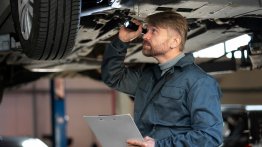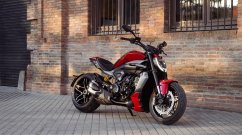There’s something inexplicable about the image of a motorcycle cutting through the wind on an open highway. The freedom, the adrenaline, and the sense of control that motorcyclists experience are something completely different from what a driver experiences behind the wheel. For most drivers, it’s simply important to get from point A to point B. But, for motorcyclists, the story is quite different.
For many, motorcycling isn’t just a form of transportation; it’s a way of life. The ride becomes not just a necessity, but it’s something motorcyclists cherish. But no matter how much motorcyclists love the rush, not all roads welcome motorcycles equally.
The very surface that cars glide over with ease can present life-threatening dangers to motorcyclists. Most roads aren’t well-equipped for these riders, and they usually lack the proper infrastructure.
While discussions about motorcycle safety often center around rider behavior, gear, and traffic laws, the role of infrastructure is frequently overlooked. Yet, a significant number of motorcycle accidents are caused—or worsened—by poor road design and maintenance. This issue isn’t just about potholes or uneven surfaces; it’s about a transportation system that was, in many ways, built with four wheels in mind, not two.
In this blog post, we’ll take a look at the increased frequency of motorcycles on the US roads and see what the current infrastructure is missing.
The rise of motorcycles in the US
Over the past two decades, motorcycle usage in the United States has steadily grown. According to data from the Motorcycle Industry Council and the U.S. Department of Transportation, there are over 8.5 million registered motorcycles in the country as of recent years, a sharp increase from the early 2000s. The reasons for this rise are many.
For one, motorcycles offer a more fuel-efficient and cost-effective mode of transportation, especially appealing in times of economic fluctuation or high gas prices.
They’re also easier to maneuver in urban traffic and take up less parking space. In recent years, there’s been a noticeable cultural shift too: motorcycling is no longer seen as a niche hobby but as a mainstream, even aspirational, lifestyle. Media portrayals, online communities, and motorcycle tourism have all contributed to its growing popularity.
Moreover, during and after the COVID-19 pandemic, many Americans turned to motorcycles as a safer alternative to crowded public transportation. For others, motorcycling offered a much-needed escape during lockdowns, sparking new interest across age groups.
However, as motorcycle ridership increases, so does the responsibility of city planners, engineers, and policymakers to accommodate this shift.
Infrastructure gaps that put motorcyclists at risk
While every driver is affected by the quality of roads, motorcyclists are particularly vulnerable due to the physical dynamics of riding on two wheels. A car may simply bounce over a pothole; a motorcycle could flip.
A puddle that’s a minor inconvenience for an SUV could cause a motorcyclist to hydroplane and crash. The consequences of poor infrastructure are often magnified for riders.
That’s why so many motorcycle accidents have been occurring in the last decade. And many of them happen specifically because of these issues. In these cases, the injured motorcyclist has the right to turn to a moftorcycle accident lawyer to help them negotiate their case.
Poor road maintenance
Potholes, cracks, and uneven surfaces are a leading concern. Motorcycles, being lighter and having smaller contact patches with the road, are more susceptible to losing traction or balance when navigating damaged surfaces. In some cases, poorly patched potholes or gravel-strewn repairs act like traps, especially on turns or at higher speeds.
Slippery road markings
Painted road markings can become dangerously slick when wet. It’s something most drivers don’t even notice, as cars don’t usually lose control from these. However, motorcycles can easily skid. The materials used in road paint are not always optimized for two-wheeled traffic, especially in rainy or humid conditions.
Inadequate drainage
Poor drainage systems can result in puddles, standing water, and even oil slicks. Not only do these hide surface imperfections, but they also create hydroplaning hazards. In low-lying areas or underpasses, standing water has led to numerous motorcycle accidents.
That’s why many cities need to optimize their drainage systems to avoid such problems. These issues can also be dangerous for pedestrians.
Lack of shoulder space and safe pull-off areas
Another issue is that many highways lack sufficient shoulder width, making it difficult for motorcyclists to safely pull over in emergencies. If a breakdown or hazard occurs, riders often have no choice but to stop in precarious positions close to moving traffic.
That makes them vulnerable to incoming traffic, and these drivers should definitely have a safe pull-off area to deal with potential hazards.
Poor lighting and visibility
Motorcyclists are harder to spot than larger vehicles, especially at night. Poorly lit roads, faded signage, and other obstacles can obscure a rider’s visibility and increase the chance of collisions, especially at intersections or sharp turns.
That’s why motorcyclists should wear protective and reflective gear at night to make themselves visible to other drivers. Many riders often forget about the importance of proper gear during nighttime, which can potentially cause accidents.
The final word
As the number of motorcycles on the US roads continues to rise, it becomes increasingly important to make sure the infrastructure is inclusive to all vehicles. Roads were primarily built for cars and trucks, but the reality of today’s transportation ecosystem demands a more versatile approach—one that recognizes the unique needs and vulnerabilities of motorcyclists.
Addressing these issues isn’t just going to improve infrastructure but it will also reduce the number of accidents that happen on a daily basis. Authorities must prioritize motorcycle-aware design and maintenance in their transportation plans.
That includes updating engineering standards, using high-traction paint, installing better drainage, introducing motorcycle-friendly barriers, and involving rider safety groups in planning processes.
Public awareness also plays a role. Car drivers must understand how road conditions affect motorcyclists and adjust their behavior accordingly. Infrastructure investment, training programs, and inter-agency collaboration can help reduce preventable accidents and build a road system that’s safer for everyone.
Freedom on two wheels shouldn't come with unnecessary risk. With better infrastructure, that ride into the sunset can be as safe as it is exhilarating.












